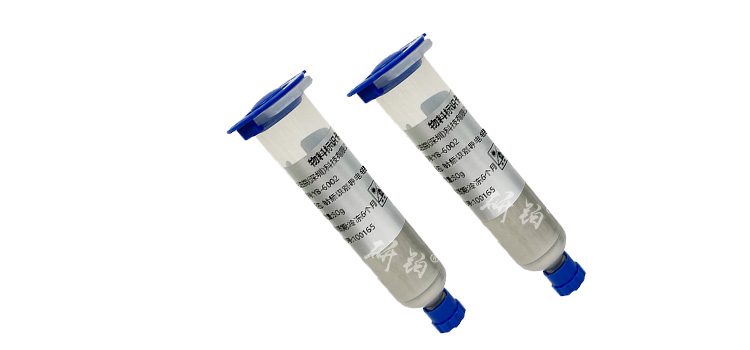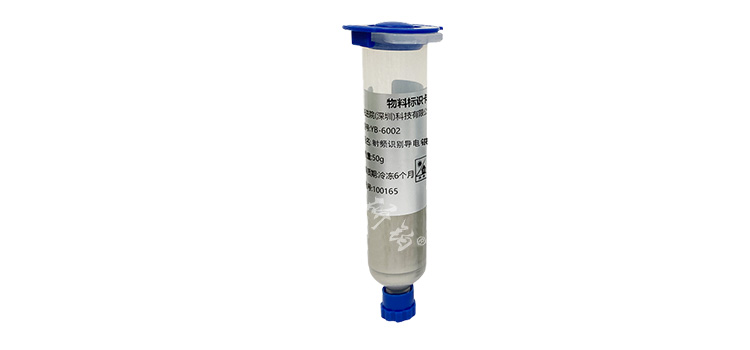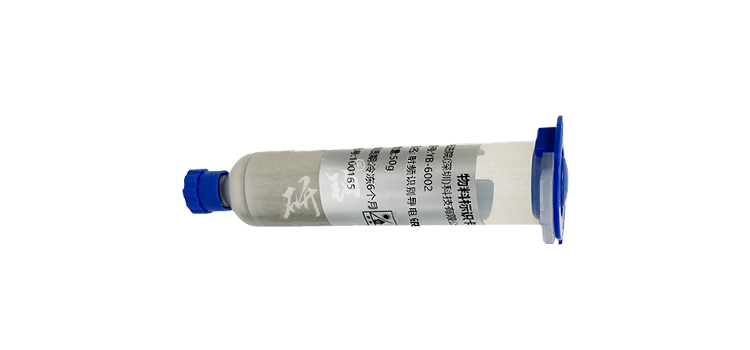The widespread application of Radio Frequency Identification (RFID) technology in modern logistics, warehouse management, identity recognition, and other fields has raised higher requirements for the performance of conductive silver adhesives. As a key material for RFID tags, the shrinkage and deformation issues during the curing process of conductive silver adhesive directly affect the performance and reliability of the tag. This article will explore how to solve the shrinkage and deformation problems that may occur during the curing process of RFID conductive silver adhesive, and specifically introduce the research and development of Advanced Institute (Shenzhen) Technology Co., Ltd
Research Platinum YB6002 RFID Conductive Silver Adhesive.
1、 Reasons for shrinkage and deformation during the curing process
1. Chemical shrinkage
During the curing process of conductive silver paste, chemical reactions cause volume shrinkage. This shrinkage is mainly caused by cross-linking reactions, and as the reaction progresses, the distance between molecular chains decreases, resulting in a reduction in overall volume.
2. Heat shrinkage
During the curing process, the conductive silver paste changes from liquid to solid, and temperature changes can cause thermal shrinkage. Especially when the curing temperature is high, thermal shrinkage is more pronounced.
3. Stress concentration
During the curing process of conductive silver paste, the uneven distribution of internal stress may cause deformation in the stress concentration area. This stress concentration usually occurs at the interface between silver paste and substrate, especially in areas with complex geometric shapes or uneven thickness.

2、 Strategies for addressing shrinkage and deformation issues
1. Optimize the formula
By adjusting the formula of conductive silver adhesive, shrinkage and deformation during the curing process can be effectively reduced.
Advanced Institute (Shenzhen) Technology Co., LtdThe YB6002 RFID conductive silver adhesive of the Research Platinum brand adopts an optimized formula, and specific measures include:
-
Increasing the content of fillers: Properly increasing the content of conductive fillers (such as silver powder) can reduce the proportion of matrix resin, thereby reducing chemical shrinkage. The silver powder content in the YB6002 conductive silver adhesive of Yanbo brand is over 80%, effectively reducing curing shrinkage.
-
Choose low shrinkage resin: Using a low shrinkage resin system, such as a mixture of epoxy resin and modifier, can reduce thermal shrinkage. The YB6002 conductive silver adhesive of Yanbo brand uses high-performance epoxy resin and adds special modifiers, significantly reducing thermal shrinkage.
2. Control the curing conditions
The curing conditions have a significant impact on the shrinkage and deformation of conductive silver paste. By optimizing the curing conditions, these problems can be effectively reduced:
-
Gradual heating curing: Adopting a gradual heating curing process can reduce the generation of thermal stress. For example, pre curing at a lower temperature (such as 60 ° C) for a period of time, and then gradually increasing the temperature to the final curing temperature (such as 150 ° C), can effectively reduce thermal shrinkage.
-
Control curing time: Extend the curing time appropriately to ensure that the conductive silver adhesive is fully cured, which can reduce chemical shrinkage. The curing time of YB6002 conductive silver adhesive from Yanbo brand is 60 minutes (150 ° C), ensuring sufficient curing and reducing shrinkage and deformation.
3. Mechanical support
Providing appropriate mechanical support during the curing process can reduce stress concentration and deformation. Specific measures include:
-
Using a supporting substrate: Before coating with conductive silver paste, a layer of supporting material, such as a flexible polymer film, can be pre coated on the substrate to provide mechanical support and reduce deformation.
-
4. Surface treatment
The surface treatment of the substrate has a significant impact on the adhesion of conductive silver paste and the stress distribution during the curing process. By optimizing surface treatment, stress concentration and deformation can be reduced:
3、 Innovative Achievements of YB6002 Radio Frequency Identification Conductive Silver Adhesive from Yanbo Brand
Advanced Institute (Shenzhen) Technology Co., Ltd. has achieved significant results in solving the shrinkage and deformation problems during the curing process with its YB6002 RFID conductive silver adhesive. This product has the following characteristics:
1. Low shrinkage rate
By optimizing the formula and curing conditions, the curing shrinkage rate of YB6002 conductive silver adhesive from Yanbo brand is less than 5%, significantly lower than similar products in the market.
2. High adhesion
By using special surface treatment techniques and optimized formulas, the adhesion between the YB6002 conductive silver adhesive of the Research Platinum brand and the substrate reaches 3B or above, ensuring good mechanical and electrical properties.
3. Excellent conductivity
4. Good environmental adaptability
This product has good resistance to high temperature, high humidity, and ultraviolet radiation, and can maintain stable performance in harsh environments.

4、 Conclusion
The shrinkage and deformation problems that may occur during the curing process of RFID conductive silver adhesive can be effectively solved by optimizing the formula, controlling the curing conditions, providing mechanical support, and optimizing surface treatment. Advanced Institute (Shenzhen) Technology Co., Ltd.'s YB6002 RFID conductive silver adhesive has achieved significant results in these areas, providing strong support for the high performance and reliability of RFID tags. In the future, with the continuous advancement of technology, conductive silver paste will demonstrate its enormous application potential in more fields.
The above data is for reference only, and specific performance may vary due to production processes and product specifications.







